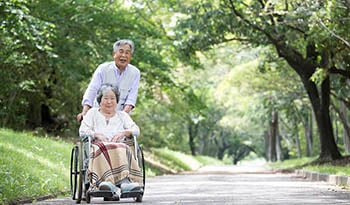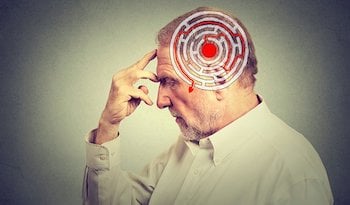天然草药和认知健康
免责声明:本博客不提供诊断⋯

传统疗法的局限性推动了草药研究
痴呆症是一种神经退行性疾病,会对记忆和学习、执行功能和日常生活活动造成渐进性损伤。全世界有超过4750万人患有痴呆症,每年有770万新病例加入痴呆症行列。血管性痴呆(VaD)风险增加可能与肥胖、血压偏高、心血管疾病和脑血管意外(即“中风”)有关。在工业化国家,VaD占所有痴呆病例的10%至15%,在世界上欠发达地区占痴呆病例的30%,是仅次于阿尔茨海默病(AD)的第二种极常见的痴呆症。超过40%的血管性痴呆病例也伴有AD神经退行性病变,代表着极为常见的混合型痴呆类型。
可用的制剂如胆碱酯酶阻止剂和谷氨酸受体拮抗剂在某些AD病例中可能有帮助,但对抗VaD的效果有限。结果是许多患有VaD的人可能正在使用草药和其他补充剂以及替代(CAM)方法,如针灸、营养保健品、瑜伽、太极拳和音乐疗法。
因为中药中使用的许多草药可能对AD和VaD的症状有潜在的益处,人们已经对它们进行了单独和不同组合的研究,这些草药包括银杏、 蛇足石杉、 姜黄、 人参、三七、假马齿苋、丹参、藏红花 和 茶。 以下简要概述了单一草药和复合草药配方的研究,这些研究可能对健康成人和痴呆症患者具有潜在的认知强化作用。
单一草药有益但有限
新进的研究结果显示银杏萃取可能有助于改善VaD动物模型的学习和记忆。大型安慰剂对照研究和荟萃分析研究符合严格的入选标准,强烈支持银杏萃取可能减慢了被诊断患有AD和VaD的个体的认知、执行功能和行为的退化速度。建议的机制显示银杏可能增强大脑功能、改善记忆和认知功能,包括降低促炎性巨噬细胞的活性、改善血流、降低血小板活化因子的活性(降低卒中风险)、降低皮质类固醇的合成和增加葡萄糖的摄取、增强神经干细胞的增殖、促进脑损伤后的突触可塑性、减少循环游离胆固醇、减少大脑中β-淀粉样蛋白前体蛋白的合成。
姜黄 (郁金)已经在中医、印度和阿育吠陀医学中被沿用了好几个世纪,可能用于对抗多种疾病,包括胰腺发炎、关节发炎、癌病和炎性反应、神经退行性疾病和消化系统疾病。动物和体外研究表明,姜黄素的认知增强益处可能基于多种作用机制,包括阻止脂质过氧化、清除活性氧(ROS)和活性氮物质、阻止NF-kB活化及其控制炎性反应的作用。姜黄素还可能直接结合小的β-淀粉样物质以阻止聚集和形成纤维缠结。在一项为期24个月的随机临床试验中,36名轻度至中度AD患者随机使用姜黄素(2和4克/天)或安慰剂,两组在认知和记忆方面有着相似的而非明显的变化。这些结果的部分原因可能是研究中使用的姜黄素制剂的生物利用度低。
动物研究结果表明,生物活性成分人参可能改善痴呆患者的认知和记忆。人参皂苷Rg5可能降低β-淀粉样蛋白 和胆碱酯酶的活性,人参皂苷Rg3可能通过增强基因表达来促进 β-淀粉样蛋白肽的降解。人参还可能通过增强血管扩张来降低血压并改善血液循环。两项为期12周的开放性试验显示,人参可能改善被诊断患有AD的个体的认知。在新近的两项小型开放性试验中,每天接受4.5和9克剂量人参的AD患者在认知和记忆方面可能得到了显着的改善。两项小型安慰剂对照试验的结果显示,三七可能改善大脑的血流量,增强被诊断患有VaD的个体的记忆力。
假马齿苋 (学名:Bacopa monnieri)可能具有神经保护和防氧化的作用,可能用作自由基清除剂,也可能增加大脑的血流量。该草药被广泛用于阿育吠陀医学,用于对抗记忆问题。目前人们正在研究草药可能增强健康成人和被诊断患有AD的个体的认知能力的功效。
藏红花(学名:Crocus sativus) 在中医中被用作抗抑郁药、解痉剂和抗羊癫疯的药。含有藏红花素的提取物可能具有防氧化和抗血小板特性,并已被证实可能改善痴呆动物模型的学习和记忆。在一项为期22周的双盲随机临床试验中,随机每天向AD患者提供30毫克藏红花和10毫克胆碱酯酶阻止剂多奈哌齐,两组在认知方面都可能表现出相当的改善,而藏红花可能具有更好的耐受性。在为期16周的双盲试验中,接受藏红花的AD患者的反应可能明显优于安慰剂组。
茶(学名:Camellia sinensis)被广泛用于保健,它含有表没食子儿茶素没食子酸酯(EGCG),具有由控制炎性反应的效果介导的神经保护作用,可能将其用作自由基清除剂等。经常喝茶的人可能会降低患AD的风险。两项前瞻性研究发现,老年人经常喝绿茶可能与患认知障碍和痴呆的风险相对较低有关。
针对痴呆症人群的单一草药研究的结果可能受到个体临床试验的样本量小、方法学质量较差和研究持续时间较短的限制。此外,许多单一草药的生物活性成分的血浆浓度可能太低以至于不能起到有益的效果,这表明观察到的认知改善可能与两种或更多种生物活性成分之间的协同相互作用有关。中医和其他亚洲医学系统通常采用草药组合,可能导致离散的生物活性成分之间的协同性相互作用,这可能更有效地对付复杂的病因,如AD和VaD病症。近来,一种称为“系统到系统分析”的新型研究方法已被应用于草药配方中复合协同相互作用的研究。
复合草药配方的前景
针对VaD的复合草药配方的研究较少。虽然有些研究显示出了好的结果,但研究成果的意义可能受到研究规模较小和方法学缺陷的限制。2012年针对VaD患者的复合草药配方研究的系统评价报告称,与常规使用的药或安慰剂相比,研究的大多数配方可能使认知功能得到显着的改善。其中4项研究表明,与传统药剂相比,草药与常规药剂相结合可能提高认知功能,然而,这些研究结果的意义可能受到严重的方法学缺陷的限制。新近的一项荟萃分析包括对被诊断患有VaD的个体进行的24项随机临床试验(均在中国进行)。在亚组分析中,与吡拉西坦(10项研究)或安慰剂(3项研究)相比,复合中草药干预可能显着地增强了认知功能。与使用吡拉西坦疗法的个体相比,接受草药疗法的个体在日常生活活动方面可能得到了更大的改善。但是,与上述研究一样,研究结果的意义可能也受到方法缺陷的限制。
持续努力开发针对血管性痴呆的复合草药配方
为了应对上述挑战,十多年来,中国医学科学院与西悉尼大学之间正在进行合作,共同开发用于对抗VaD的标准化复合草药制剂。这个名叫SLT的配方包含 银杏 (学名:Ginkgo biloba)、 人参(学名:Panax ginseng)和 藏红花 (学名:Crocus sativus)萃取的标准化制剂。
通过一系列的动物研究确定生物活性成分的理想比例和SLT的理想剂量。临床前试验证实痴呆动物模型的学习和记忆、神经病理标志物和防氧化活动可能得到了显着的改善。在撰写本文时,正在进行大规模的III期研究,以确定针对被诊断患有VaD个体的效果。临床前试验的累积结果证实了SLT的许多可能的脑血管益处,包括局灶性脑缺血/再灌注损伤面积减少、血小板聚集减少和自由基清除活性增加。
使用SLT疗法或安慰剂的个体可能具有相同的不良反应风险。在为期1周的小型随机对照试验中,16名随机接受SLT疗法的健康成年人的工作记忆可能得到了改善。在一项小型的II期研究中,被诊断可能患有VaD的个体随机接受SLT疗法后,在认知功能方面可能得到了显著的改善,一些个体可能表现出与记忆、听觉和言语处理相关的脑部区域的血流量增加。针对325名可能患有VsD的个体进行的第二个为期12个月的II期研究可能发现了类似的认知改善,这两项II期研究均报告了SLT相关的严重不良事件。在撰写本文时,正在进行两项多中心III期试验。在确认III期研究成果之前,SLT可能成为VsD的基于依据的草药疗法,VsD是一种目前尚无有效疗法的神经退行性疾病。
参考:
- Chang et al Herbal Medicine for theTreatment of Vascular Dementia:An Overview of Scientific Evidence 2016)
- Dementia Fact Sheet, World Health Organization, 2016.
- N. Kalaria, G. E. Maestre, R. Arizaga et al., “Alzheimer’s disease and vascular dementia in developing countries: prevalence, management, and risk factors,” The Lancet Neurology, vol. 7, no. 9, pp. 812–826, 2008.
- K. A. Nolan, M. M. Lino, A. W. Seligmann, and J. P. Blass, “Absence of vascular dementia in an autopsy series from a dementia clinic,” Journal of the American Geriatrics Society, vol. 46, no. 5, pp. 597–604, 1998.
- M. R. Farlow, M. L. Miller, and V. Pejovic, “Treatment options in Alzheimer’s disease: maximizing benefit, managing expectations,” Dementia and Geriatric Cognitive Disorders, vol. 25, no. 5, pp. 408–422, 2008.
- D. A. Levine and K. M. Langa, “Vascular cognitive impairment: disease mechanisms and therapeutic implications,”Neurotherapeutics, vol. 8, no. 3, pp. 361–373, 2011.
- H. Shim, “Vascular cognitive impairment and post-stroke cognitive deficits,” Current Neurology and Neuroscience Reports, vol. 14, no. 1, article 418, 2014.
- P. C. Chan, Q. Xia, and P. P. Fu, “Ginkgo biloba leave extract: biological, medicinal, and toxicological effects,” Journal of Environmental Science and Health.Part C, Environmental Carcinogenesis & Ecotoxicology Reviews, vol. 25, no. 3, pp. 211–244, 2007.
- J. Wang, W. Chen, and Y. Wang, “A ginkgo biloba extract promotes proliferation of endogenous neural stem cells in vascular dementia rats,” Neural Regeneration Research, vol. 8, no. 18, pp. 1655–1662, 2013.
- L.-Y. Zhang and Y.-L.Wang, “[Effects of EGb761 on hippocampal synaptic plasticity of vascular dementia rats],” Chinese journal of applied physiology, vol. 24, no. 1, pp. 36–40, 2008.
- Z.-X. Yao, Z. Han, K. Drieu, and V. Papadopoulos, “Ginkgo biloba extract (Egb 761) inhibits amyloid production by lowering free cholesterol levels,” Journal of Nutritional Biochemistry, vol. 15, no. 12, pp. 749–756, 2004.
- M. Hrehorovsk´a, J. Burda, I. Domor´akov´a, and E. Mech´ırov´a, “Effect of Tanakan on postischemic activity of protein synthesis machinery in the rat brain,” General Physiology and Biophysics, vol. 23, no. 4, pp. 457–465, 2004.
- P.-O. Koh, “Gingko biloba extract (EGb 761) prevents cerebral ischemia-induced p70S6 kinase and S6 phosphorylation,” American Journal of Chinese Medicine, vol. 38, no. 4, pp. 727–734, 2010.
- S. Saleem, H. Zhuang, S. Biswal, Y. Christen, and S. Dor´e, “Ginkgo biloba extract neuroprotective action is dependent on heme oxygenase 1 in ischemic reperfusion brain injury,” Stroke, vol. 39, no. 12, pp. 3389–3396, 2008.
- B. Spinnewyn, N. Blavet, and F. Clostre, “[Effects of ginkgo biloba extract on a cerebral ischemia model in gerbils],” Presse Medicale, vol. 15, no. 31, pp. 1511–1515, 1986.
- M.-N. Rocher, D. Carr´e, B. Spinnewyn et al., “Long-term treatment with standardized Ginkgo biloba Extract (EGb 761) attenuates cognitive deficits and hippocampal neuron loss in a gerbil model of vascular dementia,” Fitoterapia, vol. 82,no. 7, pp. 1075–1080, 2011.
- W.-Z. Li,W.-Y.Wu, H. Huang, Y.-Y.Wu, and Y.-Y. Yin, “Protective effect of bilobalide on learning and memory impairment in rats with vascular dementia,” Molecular Medicine Reports, vol. 8, no. 3, pp. 935–941, 2013.
- L. S. Schneider, “Ginkgo biloba extract and preventing Alzheimer disease,” JAMA, vol. 300, no. 19, pp.2306–2308,2008.
- R. Ihl, M. Tribanek, N. Bachinskaya, and Gotaday Study Group, “Efficacy and tolerability of a once daily formulation of Ginkgo biloba extract EGb 761(R) in Alzheimer’s disease and vascular dementia: results from a randomised controlled trial,” Pharmacopsychiatry, vol. 45, no. 2, pp. 41–46, 2012.
- S. Gauthier and S. Schlaefke, “Efficacy and tolerability of Ginkgo biloba extract EGb 761_ in dementia: a systematic review and meta-analysis of randomized placebo-controlled trials,” Clinical Interventions in Aging, vol. 9, pp. 2065–2077, 2014.
- M.-S. Tan, J.-T. Yu, C.-C. Tan et al., “Efficacy and adverse effects of Ginkgo Biloba for cognitive impairment and dementia: a systematic review and meta-analysis,” Journal of Alzheimer’s Disease, vol. 43, no. 2, pp. 589–603, 2015.
- Y. Wang, L.-Q. Huang, X.-C. Tang, and H.-Y. Zhang, “Retrospect and prospect of active principles from Chinese herbs in the treatment of dementia,” Acta Pharmacologica Sinica, vol. 31, no. 6, pp. 649–664, 2010.
- J. M. Ringman, S. A. Frautschy, G. M. Cole, D. L. Masterman, and J. L. Cummings, “A potential role of the curry spice curcumin in Alzheimer’s disease,” Current Alzheimer Research, vol. 2, no. 2, pp. 131–136, 2005.
- F. Yang, G. P. Lim, A. N. Begum et al., “Curcumin inhibits formation of amyloid oligomers and fibrils, binds plaques, and reduces amyloid in vivo,” The Journal of Biological Chemistry, vol. 280, no. 7, pp. 5892–5901, 2005.
- J. M. Ringman, S. A. Frautschy, E. Teng et al., “Oral curcumin for Alzheimer’s disease: tolerability and efficacy in a
- 24-week randomized, double blind, placebo-controlled study,” Alzheimer’s Research andTherapy, vol. 4, no. 5, article 43, 2012.
- S. Chu, J. Gu, L. Feng et al., “Ginsenoside Rg5 improves cognitive dysfunction and beta-amyloid deposition in STZ induced memory impaired rats via attenuating neuroinflammatory responses,” International Immunopharmacology, vol. 19,no. 2, pp. 317–326, 2014.
- H. Yang, J. Zhang, R. M. Breyer, and C. Chen, “Altered hippocampal long-term synaptic plasticity in mice deficient in the PGE2 EP2 receptor,” Journal of Neurochemistry, vol. 108, no. 1, pp. 295–304, 2009.
- J.-X. Liu, W.-H. Cong, L. Xu, and J.-N. Wang, “Effect of combination of extracts of ginseng and ginkgo biloba on acetylcholine in amyloid beta-protein-treated rats determined by an improved HPLC,” Acta Pharmacologica Sinica, vol. 25, no.9, pp. 1118–1123, 2004.
- J. Shi, S. Zhang, M. Tang et al., “The 1239G/C polymorphism in exon 5 of BACE1 gene may be associated with sporadic Alzheimer’s disease in Chinese Hans,” American Journal of Medical Genetics Part B:Neuropsychiatric Genetics, vol. 124, no. 1, pp. 54–57, 2004.
- Y. Sun, J. Ke, N. Ma, Z. Chen, C. Wang, and X. Cui, “[Effects of root rot on saponin content in Panax notoginseng],” Zhong yao cai = Zhongyaocai = Journal of Chinese medicinal materials, vol. 27, no. 2, pp. 79–80, 2004.
- K.-T. Choi, “Botanical characteristics, pharmacological effects and medicinal components of Korean Panax ginseng CA Meyer,” Acta Pharmacologica Sinica, vol. 29, no. 9, pp. 1109–1118, 2008.
- J.-H. Heo, S.-T. Lee, K. Chu et al., “An open-label trial of Korean red ginseng as an adjuvant treatment for cognitive impairment in patients with Alzheimer’s disease,” European Journal of Neurology, vol. 15, no. 8, pp. 865–868, 2008.
- S.-T. Lee, K. Chu, J.-Y. Sim, J.-H. Heo, and M. Kim, “Panax ginseng enhances cognitive performance in Alzheimer disease,” Alzheimer Disease and Associated Disorders, vol. 22, no. 3, pp. 222–226, 2008.
- J.-H. Heo, S.-T. Lee, M. J. Oh et al., “Improvement of cognitive deficit in Alzheimer’s disease patients by long term treatment with Korean red ginseng,” Journal of Ginseng Research, vol. 35, no. 4, pp. 457–461, 2011.
- J. Tian, “Ginseng may improve memory in stroke dementia patients,” in Proceedings of the American Stroke Association Meeting, Augusta, Canada, 2003.
- Q. F.Gui,Y.M.Yang, S. H. Ying, andM. M. Zhang, “Xueshuantong improves cerebral blood perfusion in elderly patients with lacunar infarction,” Neural Regeneration Research, vol. 8, no. 9, pp. 792–801, 2013.
- A. Russo and F. Borrelli, “Bacopamonniera, a reputed nootropic plant: an overview,” Phytomedicine, vol. 12, no. 4, pp. 305–317, 2005.
- S. K. Bhattacharya, A. Bhattacharya, A. Kumar, and S. Ghosal, “Antioxidant activity of Bacopa monniera in rat frontal cortex, striatum and hippocampus,” Phytotherapy Research, vol. 14, no. 3, pp. 174–179, 2000.
- A. Russo, A. A. Izzo, F. Borrelli, M. Renis, and A. Vanella, “Free radical scavenging capacity and protective effect of Bacopa monniera L. on DNA damage,” Phytotherapy Research, vol. 17, no. 8, pp. 870–875, 2003.
- N. Kamkaew, C. N. Scholfield, K. Ingkaninan, N. Taepavarapruk, and K. Chootip, “Bacopa monnieri increases cerebral blood flow in rat independent of blood pressure,” Phytotherapy Research, vol. 27, no. 1, pp. 135–138, 2013.
- C. Stough, A. Scholey, V. Cropley et al., “Examining the cognitive effects of a special extract of Bacopa monniera (CDRI08:Keenmind): a review of ten years of research at Swinburne University,” Journal of Pharmacy and Pharmaceutical Sciences, vol. 16, no. 2, pp. 254–258, 2013.
- C. K. Stough, M. P. Pase, V. Cropley et al., “A randomized controlled trial investigating the effect of Pycnogenol and Bacopa CDRI08 herbal medicines on cognitive, cardiovascular, and biochemical functioning in cognitively healthy elderly people: theAustralian ResearchCouncil Longevity Intervention (ARCLI) study protocol (ANZCTR12611000487910),” Nutrition Journal, vol. 11, article 11, 2012.
- K. Abe and H. Saito, “Effects of saffron extract and its constituent crocin on learning behaviour and long-term potentiation,” Phytotherapy Research, vol. 14, no. 3, pp. 149–152, 2000.H. Hosseinzadeh and T. Ziaei, “Effects of Crocus sativus stigma extract and its constituents, crocin and safranal, on intact memory and scopolamine−induced learning deficits in rats performing the Morris water maze task,” Journal of Medicinal Plants, vol. 5, no. 19, pp. 40–50, 2006.
- H. Hosseinzadeh and H. R. Sadeghnia, “Safranal, a constituent of Crocus sativus (saffron), attenuated cerebral ischemia induced oxidative damage in rat hippocampus,” Journal of Pharmacy and Pharmaceutical Sciences, vol. 8, no. 3, pp.394–399, 2005.
- S. W. Jessie and T. P. Krishnakantha, “Inhibition of human platelet aggregation and membrane lipid peroxidation by food spice, saffron,”Molecular and Cellular Biochemistry, vol. 278, no. 1, pp. 59–63, 2005.
- S. Akhondzadeh, M. S. Sabet, M. H. Harirchian et al., “A 22-week, multicenter, randomized, double-blind controlled trial of Crocus sativus in the treatment of mild-to-moderate Alzheimer’s disease,” Psychopharmacology, vol. 207, no.4, pp.637–643, 2010.
- S. Akhondzadeh, M. S. Sabet, M. H. Harirchian et al., “Saffron in the treatment of patients with mild to moderate Alzheimer’s disease: a 16-week, randomized and placebo-controlled trial,” Journal of Clinical Pharmacy andTherapeutics, vol. 35, no. 5, pp. 581–588, 2010.
- S. A. Mandel, T. Amit, L. Kalfon, L. Reznichenko, and M. B. H. Youdim, “Targeting multiple neurodegenerative diseases etiologies with multimodal-acting green tea catechins,” Journal of Nutrition, vol. 138, no. 8, pp. 1578S–1583S, 2008.
- A. B. Sharangi, “Medicinal and therapeutic potentialities of tea (Camellia sinensis L.)—a review,” Food Research International, vol. 42, no. 5-6, pp. 529–535, 2009.
- M. Noguchi-Shinohara, S. Yuki, C. Dohmoto et al., “Consumption of green tea, but not black tea or coffee, is associated with reduced risk of cognitive decline,” PLoS ONE, vol. 9, no. 5, Article ID e96013, 2014.
- H. Wagner and G. Ulrich-Merzenich, “Synergy research: approaching a new generation of phytopharmaceuticals,” Phytomedicine, vol. 16, no. 2-3, pp. 97–110, 2009.
- X. Zhou, S. W. Seto, D. Chang et al., “Synergistic effects of Chinese herbal medicine: a comprehensive review of methodology and current research,” Frontiers in Pharmacology, vol. 7, article 201, 2016.
- K. Iwasaki, S. Kobayashi, Y. Chimura et al., “A randomized, double-blind, placebo-controlled clinical trial of the Chinese herbal medicine ‘Ba Wei Di Huang Wan’ in the treatment of dementia,” Journal of the American Geriatrics Society, vol. 52, no. 9, pp. 1518–1521, 2004.
- K. Nagata, E. Yokoyama, T. Yamazaki et al., “Effects of yokukansan on behavioral and psychological symptoms of vascular dementia: an open-label trial,” Phytomedicine, vol. 19, no. 6, pp. 524–528, 2012.
- S. C. Man, K. W. Chan, J. Lu, S. S. Durairajan, L. Liu, and M. Li, “Systematic review on the efficacy and safety of herbal medicines for vascular dementia,” Evidence-Based Complementary and Alternative Medicine, vol. 2012, Article ID 426215, 22 pages, 2012.
- D. Gong, J. Xu, and Y. Fan, “Meta-analysis of clinical trials of oral Chinese herbal prescriptions for treatment of vascular dementia based on mini mental state examination scores,” European Journal of Integrative Medicine, vol. 7, no. 2, pp. 108–117, 2015.
- L. Xu, W. Cong, C. Wei, and J. Liu, “Effects of Weinaokang (SLT) on dysmnesia in micemodels,” Pharmacology and Clinics of Chinese Materia Medica, no. 6, pp. 60–62, 2007.
- L. Xu, J.-X. Liu, W.-H. Cong, and C.-E. Wei, “[Effects of Weinaokang capsule on intracephalic cholinergic system and capability of scavenging free radicas in chronic cerebral hypoperfusion rats],” Zhongguo Zhongyao Zazhi, vol. 33, no.5, pp. 531–534, 2008.
- W. H. Cong, J. X. Liu, and L. Xu, “Effects of extracts of Ginseng and Ginkgo biloba on hippocampal acetylcholine and monoamines in PDAP-pV717I transgenic mice,” Zhongguo Zhong xi yi jie he za zhi Zhongguo Zhongxiyi jiehe zazhi, vol. 27, no. 9, pp. 810–813, 2007.
- W.-H. Cong, B. Yang, L. Xu et al., “Herbal extracts combination (WNK) prevents decline in spatial learning and memory in APP/PS1 mice through improvement of hippocampal A plaque formation, histopathology, and ultrastructure,” Evidence-based Complementary and Alternative Medicine, vol. 2012, Article ID478190, 9 pages, 2012.
- S. Seto, A. Jenkins, H. Kiat, A. Bensoussan, J. Liu, and D. Chang, “Protective effects of a standardised herbal formulation,
- Sailotong, on hydrogen peroxide (H2O2) induced damage in EA.HY926 Cells,” The Journal of Alternative and Complementary Medicine, vol. 22, no. 6, p.A35, 2016.
- T. Li, H.-M. Liu, Y. Lu et al., “Aphase I tolerance and safety study of Sailuotong capsule,” Chinese Journal of NewDrugs, vol. 21,no. 1, pp. 62–67, 2012.
- G. Z. Steiner, A. Yeung, J.-X. Liu et al., “The effect of Sailuotong (SLT) on neurocognitive and cardiovascular function in healthy adults: a randomised, double-blind, placebo controlled crossover pilot trial,” BMC Complementary and
- Alternative Medicine, vol. 16, no. 15, 2016.J. Liu, D. Chang, D. Chan, J. Liu, and A. Bensoussan, “A randomised placebo-controlled clinical trial of a Chinese herbal medicine for the treatment of vascular dementia,” in Proceedings of the 2nd International Congress for Complementary Medicine Research, Munich, Germany, 2007.
- D. Chang, B. Colagiuri, and R. Luo, Chinese Medicine used to Treat Dementia, Advances in Natural Medicines, Nutraceuticals and Neurocognition, CRC Press, 2013.

 作者 詹姆斯·莱克博士(Dr. James Lake),医级博士
作者 詹姆斯·莱克博士(Dr. James Lake),医级博士


